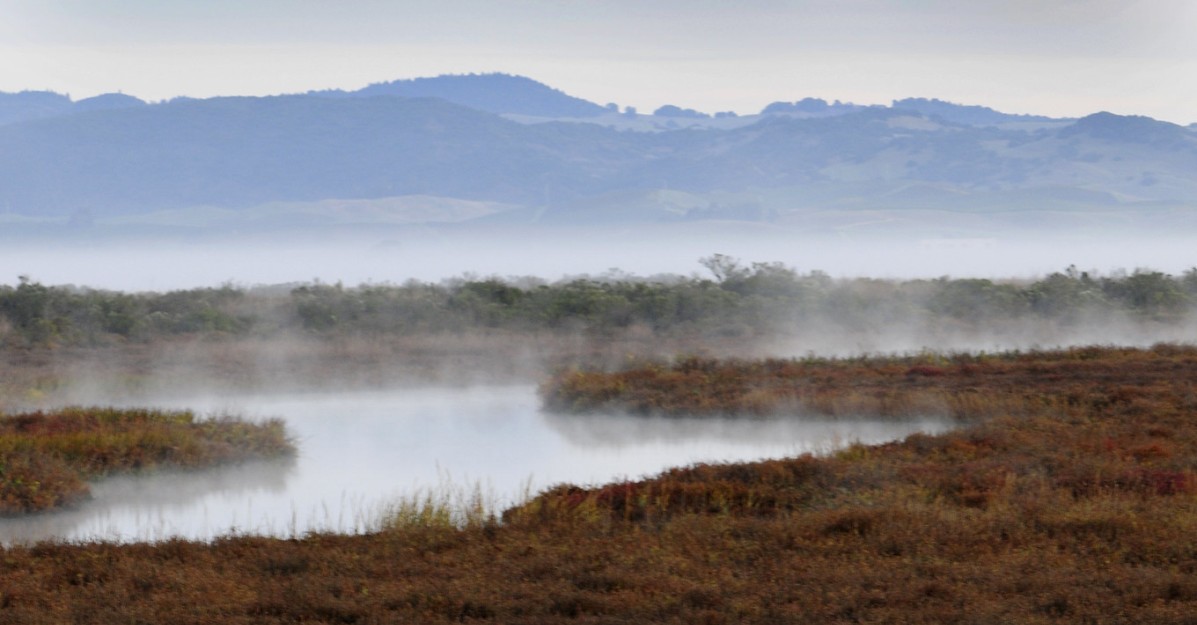By Alexandra K. Scammell, American Geophysical Union
Extreme precipitation from hurricanes and atmospheric rivers can lead to increased flooding in the world’s coastal zones, where more than 630 million people reside. Tidal marshes act as important buffers in these areas, absorbing the initial impact of storm surges and strong winds. In addition, tidal marsh ecosystems rely on storm events to deposit sediments that help with marsh accretion.
In a new study, Thorne et al. focused on tidal marsh accretion and elevation change in the San Francisco Bay after an atmospheric river event in 2016-2017. The authors installed deep rod surface elevation table instruments and feldspar marker horizon plots at five marsh sites differing in salinity and tidal range to determine vertical accretion and elevation changes.
They discovered that in response to the storms, different landscape characteristics at the sites played important roles in sediment deposition and flooding. For example, sites that were closest to rivers had the highest accretion and surface elevation gains. According to the authors, these data can provide important insights for offsetting sea level rise and thwarting habitat loss. Incorporating marsh accretion responses to storm events into wetland evolution models could also help predict marshes’ long-term response to sea level rise. (Journal of Geophysical Research: Biogeosciences, https://doi.org/10.1029/2021JG006592, 2022)



